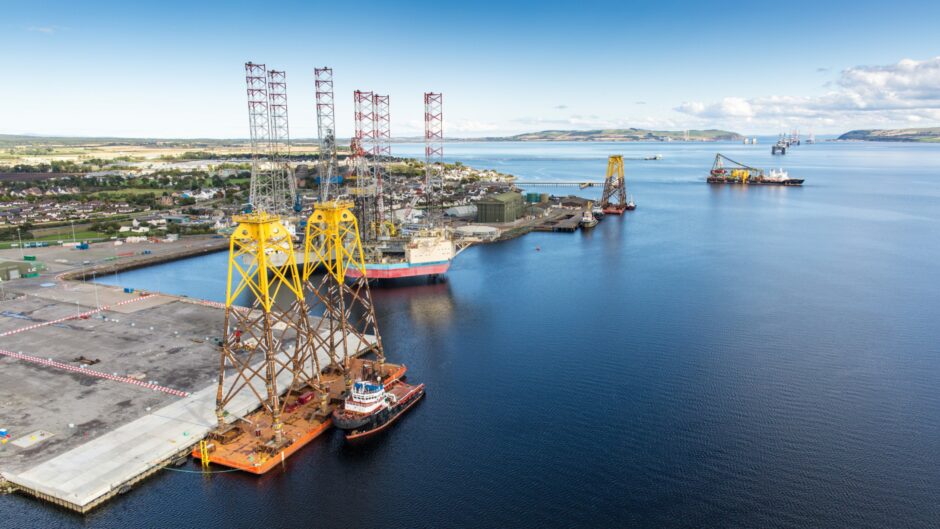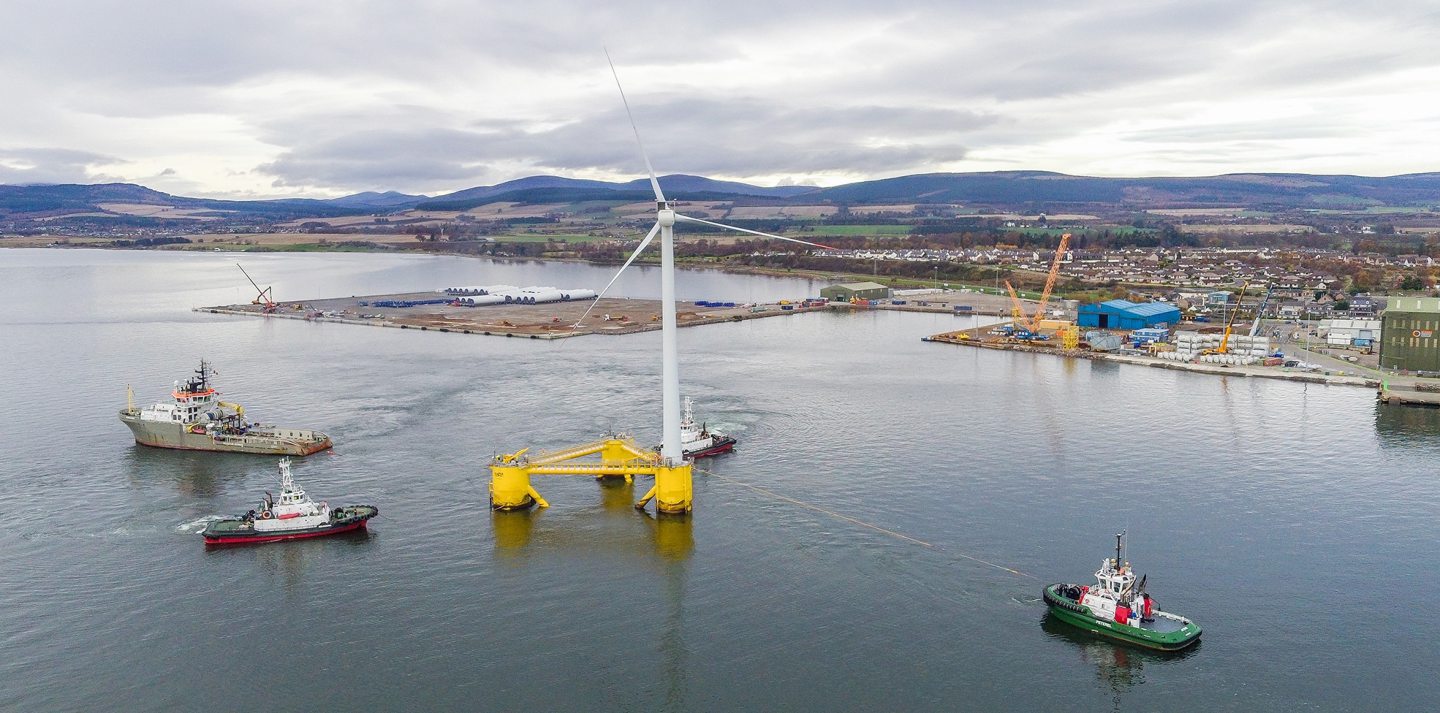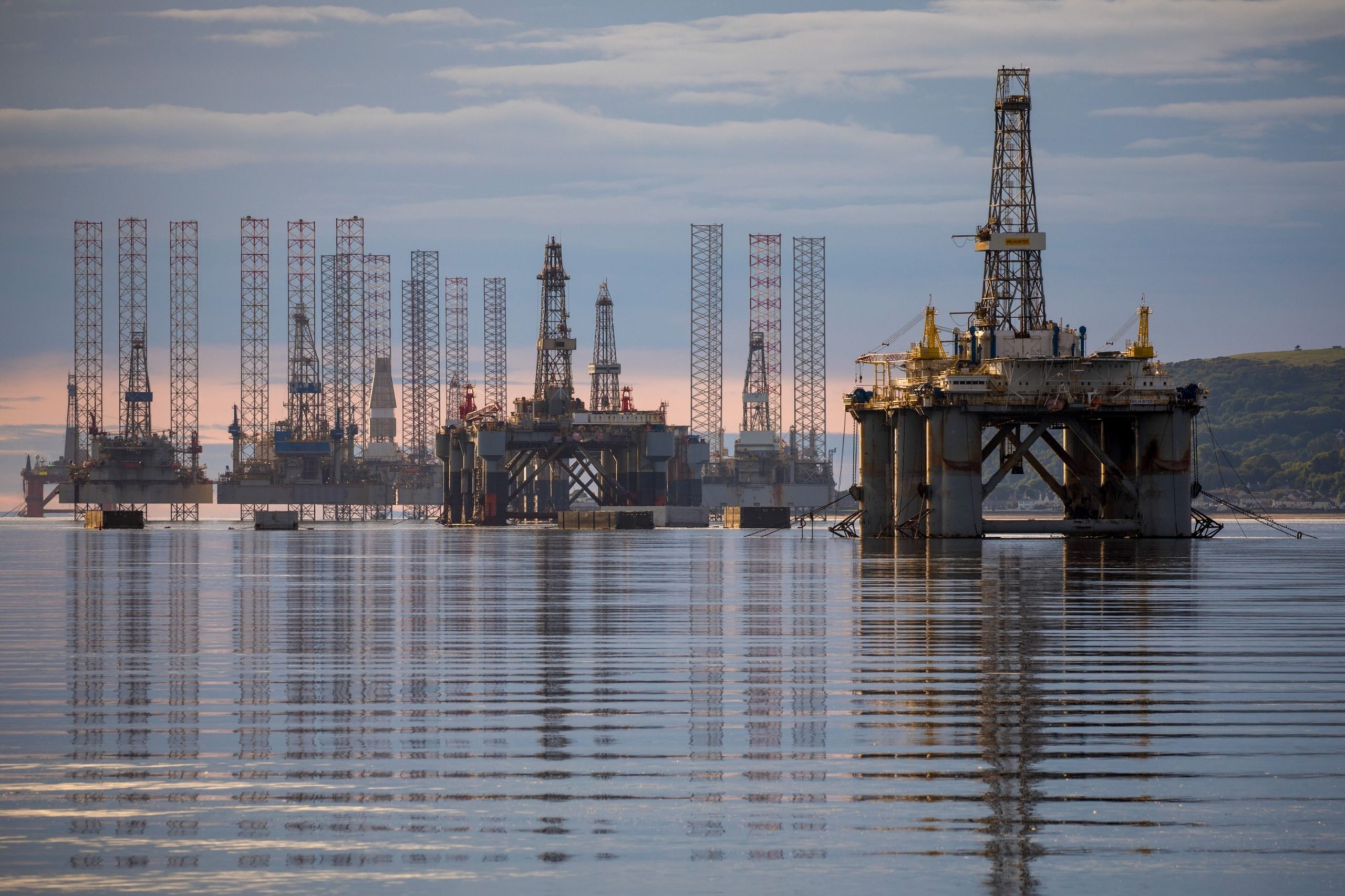
Port of Cromarty Firth (PoCF) has unveiled an ambitious £150 million plan to double the size of its existing capacity in a bid to meet a huge rise in renewable energy needs and create “thousands of jobs.”
Aiming to become the “go-to hub” for a host of on and off-shore renewable projects, the massive project will build on the port’s existing phase one, two and three developments and is due to proceed whatever the imminent green freeport decision will be.
The much-anticipated freeport decision was thought to have been made jointly by the Scottish and UK governments this summer, but political upheaval in London scuppered any immediate judgement.
PoCF chief executive Bob Buskie said: “We are investing £3m just now doing an early pre-construction series of works associated with the environmental, impact, bird and navigation surveys and looking at making applications for marine, environmental and dredge licences.
“We are committed to expanding the capacity to greater than what we have today. The future for us is about looking to invest somewhere in the region of £150m in developing additional infrastructure, pretty much doubling the size of the capacity.
Cromarty Firth as ‘go-to hub’
“We are trying to do everything we can to position the Cromarty Firth as the go-to hub for off-shore renewables, manufacturing, marshalling, assembling of fixed and floating – particularly floating – off-shore wind.
“We envisage the sanctioning of that project happening throughout 2023 and the project completed before the end of 2027. The exercise we are doing now is to establish the final cost and affordability as well as the funding associated with that.
“Job creation is something the region will need in the long term and even reverse the decline in population in the Highlands; this is going to create thousands of jobs.”
The vast scheme has been driven by the size and scale of PoCF’s experience with the ScotWind licencing round, with it “becoming apparent” far greater capacity is needed.
The colossal figure of £150m will come from a combination of the port’s own resources, grant funding from “various government opportunities,” borrowing, institutional finance and potentially, backing from developers.
News of PoCF’s plans come as the business unveiled 2021 pre-tax profits tumbling from £4.8m the previous year to £1.2m, while turnover dropped 28% to £9.2m from £12.7m in the previous 12 months as “significant reductions” in subsea vessels, rigs at anchor and offshore service vessels were the result of the downturn in the oil and gas sector.
Mr Buskie also cited a “combination” of Covid generating a fall in demand for oil and gas during the pandemic as partly behind the results, while the cruise industry “pretty much shut down.”
The PoCF chief also noted despite sharply rising energy costs following the outbreak of war in Ukraine, the Scottish government’s drive towards net zero and the push to green technologies such as hydrogen would mean “very little uptick in oil and gas activity.”
Green freeport decision imminent?
The elephant in the room remains green freeport status, but Mr Buskie is confident even if PoCF falls at the final hurdle as one of two Scottish locations out of five bidders, enough demand remains for off-shore, renewable and hydrogen opportunities.
The bidders are: North East Scotland Green Freeport, Opportunity Cromarty Firth, Orkney Green Freeport, Forth Green Freeport and Clyde Green Freeport.
“The icing on the cake is the green freeport, but this development will happen whether there is a green freeport or not,” said Mr Buskie, adding: “We are really hopeful now there is a bit of stability in the UK government the announcement will be made in the next few weeks.
“I believe the bid we put in was very robust – you are not going to have the same growth without the green freeport being enabled.”
Despite the relatively gloomy 2021 numbers, PoCF points to the sharp rebound in cruise ship activity in 2022. Already this year a record 109 cruise liners have docked at Cromarty, up from a paltry 20 the previous year due to Covid and with a potential 140 vessels potentially arriving next year.
The Easter Ross port has recruited a further four staff taking its total to 42, while last summer its £50m Quay West development at Invergordon was officially opened by Princess Anne.
With two new berths and a 372-metre quayside, it also has one of the largest port laydown facilities of its kind in the UK, at more than 969,000 square feet.
Last year also saw the conclusion of construction of the 950-megawatt (MW) Moray East offshore wind farm, in which the PoCF played an integral role as an intermediary port.
Proximity of ScotWind sites to Cromarty Firth presents opportunity pipeline”
Mr Buskie added: “The renewable energy sector is a key target market for the port. Our ambitions for the future remain within touching distance with ScotWind offshore wind farm site leasing announcements.
“The proximity of the ScotWind sites to the Cromarty Firth presents a potential sustainable pipeline of opportunities for the port, the region and the supply chain for years to come.”
Half of PoCF’s revenue in 2021 came from oil and gas industry activity, 30% from renewables, 10% from cruise and 10% from other sectors.
With a total tonnage of 4.6m gross tonnes, there were 465 vessel arrivals at the Port during the year.
Recommended for you

 © Supplied by DCT Media
© Supplied by DCT Media © Supplied by Port of Cromarty Fir
© Supplied by Port of Cromarty Fir © Bloomberg
© Bloomberg